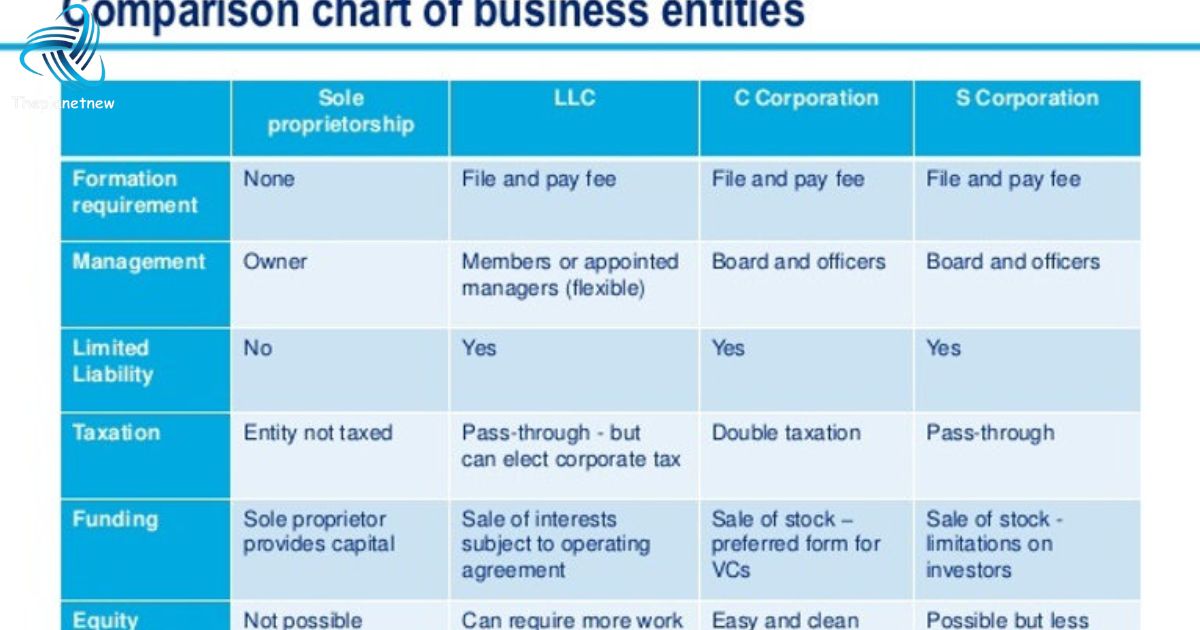Are you ready to dive into the world of corporate business entities? Brace yourself, because we’re about to uncover a disadvantage that might surprise you. Picture this: imagine swimming against the current in a river that never seems to flow in your favor. Well, that’s exactly what you face when dealing with the corporate form of business entity. Get ready to explore the lack of flexibility, complex governance, and other challenges that come with this structure.
Key Takeaways
- Lack of flexibility and efficiency in decision-making
- Complex governance structure and potential for power struggles
- Potential for power concentration and limited privacy
- Challenges of comparability with peers and importance of shareholder information transparency
Lack of Flexibility in Decision-Making
You may find that decision-making lacks flexibility in the corporate form of business entity. In this structure, the power to make important decisions is concentrated in the hands of a few key individuals, such as the board of directors and top executives. This centralized decision-making process can often be slow and cumbersome, as it requires approval from multiple levels of management. Additionally, the decision-making process in a corporate entity is often driven by the pursuit of profit and shareholder value, rather than considering the needs and desires of all stakeholders.
This lack of flexibility can be frustrating for employees and other stakeholders who may have valuable insights and ideas to contribute. It can also lead to missed opportunities and a failure to adapt quickly to changing market conditions. Overall, the lack of flexibility in decision-making within the corporate form of business entity can hinder innovation and limit the ability to respond effectively to challenges and opportunities.
Complex Governance Structure
When it comes to complex governance structures, you may find yourself dealing with limited decision-making efficiency and a potential for power struggles. The intricate framework of multiple levels of management and decision-making processes can often lead to delays and inefficiencies in the decision-making process. Moreover, the distribution of power among various stakeholders can create conflicts and power struggles, further hindering effective governance.
Limited Decision-Making Efficiency
If you’re a shareholder in a corporation, decision-making efficiency may be limited. Here’s why:
- Multiple layers of decision-making: In a corporation, decisions are often made by a board of directors, executive management, and various committees. This hierarchical structure can slow down the decision-making process as each level needs to review and approve the decisions.
- Bureaucracy and red tape: Corporations have to abide by numerous regulations and compliance requirements. This can result in a complex and time-consuming decision-making process, as decisions need to take into account legal and regulatory considerations.
- Shareholder diversity: As a shareholder, you are just one voice among many. With a large number of shareholders, it can be challenging to reach a consensus on important decisions, leading to delays and inefficiencies.
Limited decision-making efficiency in corporations can create frustration and hinder progress. This limitation sets the stage for potential power struggles among different stakeholders vying for influence and control.
Potential for Power Struggles
Navigating power struggles within a corporation can be challenging, as different stakeholders vie for influence and control. In a competitive corporate environment, power struggles can arise due to conflicting interests and goals. These power struggles not only create tension and discord but also hinder decision-making efficiency. The potential for power struggles within a corporation is a disadvantage of the corporate form of business entity.
To understand the complexity of power struggles within a corporation, let’s consider a hypothetical scenario involving three key stakeholders: shareholders, executives, and board members. Each stakeholder has their own interests and objectives, which can often clash with one another. This clash of interests can lead to power struggles as each stakeholder seeks to assert their influence and control over the corporation.
| Stakeholder | Interests and Objectives | Potential Power Struggles |
|---|---|---|
| Shareholders | Maximizing returns on investments | Influence over decision-making processes and company direction |
| Executives | Achieving company growth and profitability | Control over resources and strategic direction |
| Board Members | Ensuring corporate governance and compliance | Influence over executive appointments and strategic decision-making |
These power struggles can result in disagreements, conflicts, and even legal disputes, which can ultimately hamper the overall progress and success of the corporation. Therefore, it is crucial for all stakeholders to find a balance and work together towards a common goal, fostering a sense of belonging and unity within the organization.
Potential for Power Concentration
You may find that power concentration is a potential drawback of the corporate form of business entity. In this structure, power is often centralized in the hands of a few individuals or a board of directors. This can lead to a number of issues that can hinder the success and growth of the company.
Here are three key reasons why power concentration can be detrimental:
- Lack of diverse perspectives: When power is concentrated in a few decision-makers, there is a limited range of opinions and ideas considered. This can result in a narrow-minded approach and missed opportunities for innovation.
- Increased risk of abuse: With power concentrated in a few individuals, there is an increased risk of misuse or abuse of power. This can lead to unethical practices, favoritism, and unfair treatment of employees.
- Slower decision-making: Power concentration can lead to a slower decision-making process. With decision-making authority centralized, there can be delays in crucial decisions as they need to go through a hierarchy of approvals.
As power concentration can have a significant impact on the functioning of a corporation, it is important to consider alternative business structures that promote a more inclusive and balanced distribution of power. Limited privacy and confidentiality are other aspects that need careful consideration in the corporate form of business entity.
Limited Privacy and Confidentiality
When it comes to limited privacy and confidentiality in the corporate form of business entity, you face certain drawbacks. Firstly, public financial disclosures are a requirement, meaning that your company’s financial information will be available for anyone to access and scrutinize. Additionally, shareholder information transparency is another aspect that limits your privacy, as shareholders have the right to access certain information about the company and its operations. These factors can potentially expose sensitive information and compromise your business’s confidentiality.
Public Financial Disclosures
If you’re considering investing in a corporate entity, it’s important to be aware of the public financial disclosures associated with this form of business. These disclosures provide transparency and accountability, giving you the necessary information to make informed decisions. Here are three key reasons why understanding public financial disclosures is crucial:
- Assessment of financial health: Public financial disclosures allow you to assess the financial health of the company. By analyzing financial statements such as income statements, balance sheets, and cash flow statements, you can evaluate profitability, liquidity, and solvency.
- Understanding risk factors: Public financial disclosures highlight the potential risks and uncertainties faced by the company. By examining the management’s discussion and analysis, you can gain insights into the company’s strategies, industry trends, and potential challenges.
- Comparability with peers: Public financial disclosures enable you to compare the company’s performance with its competitors. This information helps you gauge the company’s competitive position and identify potential areas for improvement.
Being well-informed about public financial disclosures is essential for making sound investment decisions. It lays the foundation for understanding shareholder information transparency, which we will explore next.
Shareholder Information Transparency
Now let’s delve into the topic of shareholder information transparency. As a shareholder, it is important for you to have access to relevant and accurate information about the company you have invested in. Transparency in shareholder information allows you to make well-informed decisions and ensures that you have a sense of belonging within the company. By providing transparency, companies foster trust and loyalty among shareholders, creating a strong sense of community.
This transparency includes disclosing financial statements, annual reports, and other relevant information that enables you to assess the company’s performance and governance practices. Such transparency can also help in holding management accountable for their actions. However, it is important to note that ensuring transparency comes with a higher administrative and compliance burden, which we will explore further in the next section.
Higher Administrative and Compliance Burden
You’ll experience a higher administrative and compliance burden with the corporate business entity. Here are three reasons why:
- Increased paperwork: As a corporation, you’ll have to maintain detailed records of your financial transactions, shareholder meetings, and other important documents. This will require consistent and meticulous record-keeping, which can be time-consuming and tedious.
- Regulatory requirements: Corporations are subject to extensive government regulations and reporting obligations. You’ll need to comply with tax laws, financial reporting standards, and other legal requirements. This can involve hiring professionals or dedicating significant resources to ensure compliance.
- Board of directors: Corporations typically have a board of directors, responsible for making important decisions and overseeing the company’s operations. This adds an additional layer of administration and governance, as board meetings, minutes, and resolutions need to be properly documented and managed.
While the corporate form offers benefits like limited liability and access to capital, it’s important to consider the increased administrative and compliance burden it entails.
Difficulty in Maintaining Company Culture and Values
Maintaining your company culture and values can be challenging when operating as a corporation. As a member of a corporate entity, you may find it difficult to preserve the unique essence and principles that define your organization. Corporations often face the risk of diluting their culture due to factors such as rapid growth, diverse workforce, and hierarchical structures.
The need to conform to legal obligations and meet shareholders’ expectations can sometimes overshadow the importance of upholding the company’s core values. Furthermore, the decentralized decision-making process in corporations can lead to inconsistency in implementing cultural practices across different departments or locations. It is crucial to establish strong communication channels and regular employee engagement initiatives to foster a sense of belonging and reinforce the company’s culture and values throughout the organization.
Frequently Asked Questions
What Are the Advantages of the Corporate Form of Business Entity?
The advantages of the corporate form of business entity are numerous. It offers limited liability, easy transferability of ownership, access to capital markets, and perpetual existence. These benefits make it an attractive option for those seeking to start or expand their business.
How Does the Lack of Flexibility in Decision-Making Affect a Corporation’s Ability to Respond to Changing Market Conditions?
The lack of flexibility in decision-making can hinder a corporation’s ability to adapt to changing market conditions. This constraint limits your capacity to make timely and effective choices, potentially lowering your competitiveness in the business landscape.
What Are Some Examples of a Complex Governance Structure in a Corporate Entity?
In a complex governance structure, think of a web of interconnected relationships, like a labyrinth of decision-making. Multiple layers of management, boards, committees, and shareholders work together to navigate the corporate entity’s path.
How Does the Potential for Power Concentration in a Corporation Impact the Decision-Making Process?
When power is concentrated in a corporation, decision-making can be influenced by a select few rather than considering the diverse perspectives of stakeholders. This can hinder innovation, limit creativity, and exclude valuable input from different parts of the organization.
What Are the Consequences of Limited Privacy and Confidentiality for a Corporation?
Limited privacy and confidentiality in a corporation can have serious consequences. Your sensitive business information may be exposed, leading to loss of competitive advantage and potential legal troubles. It’s crucial to safeguard your company’s data.
Conclusion
In conclusion, while the corporate form of business entity offers numerous advantages, it also comes with its fair share of disadvantages. Like a tightly woven tapestry, the complex governance structure and potential for power concentration can restrict flexibility in decision-making. Additionally, the higher administrative and compliance burden, limited privacy and confidentiality, and difficulty in maintaining company culture and values further add to the challenges faced by corporations. It is crucial for businesses to carefully consider these drawbacks before opting for the corporate form.









